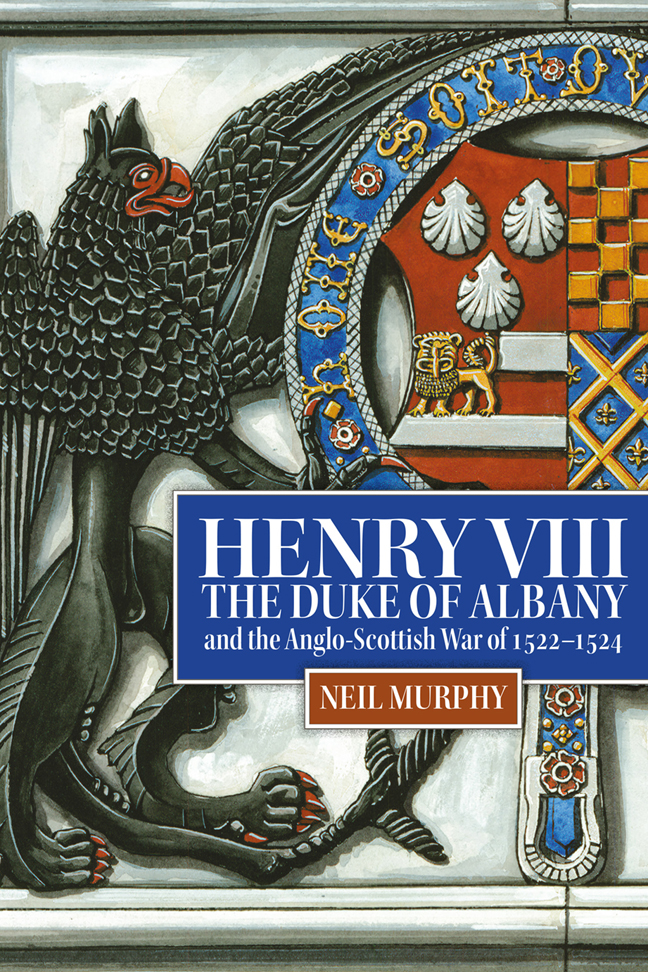Book contents
- Frontmatter
- Dedication
- Contents
- List of Maps
- Acknowledgements
- List of Abbreviations
- Glossary of Selected Scots Words and Terms
- Introduction
- 1 Albany's Return to Scotland to the Sack of Jedburgh (November 1521–September 1523)
- 2 Albany's March on Wark to the Treaty of Berwick (September 1523–January 1526)
- 3 Military Mobilisation in Scotland
- 4 The Supply of Scottish Armies
- 5 The Destruction of the Scottish Borders
- 6 The Defence of the English Frontier
- 7 Spies and Informers
- Conclusion
- Bibliography
- Index
Introduction
Published online by Cambridge University Press: 10 January 2024
- Frontmatter
- Dedication
- Contents
- List of Maps
- Acknowledgements
- List of Abbreviations
- Glossary of Selected Scots Words and Terms
- Introduction
- 1 Albany's Return to Scotland to the Sack of Jedburgh (November 1521–September 1523)
- 2 Albany's March on Wark to the Treaty of Berwick (September 1523–January 1526)
- 3 Military Mobilisation in Scotland
- 4 The Supply of Scottish Armies
- 5 The Destruction of the Scottish Borders
- 6 The Defence of the English Frontier
- 7 Spies and Informers
- Conclusion
- Bibliography
- Index
Summary
In November 1521, John Stewart, duke of Albany and regent for James V, arrived in Scotland after a four-year absence in France. Although Albany returned principally to restore domestic political order, nonetheless this action escalated tensions with Henry VIII, who demanded that Francis I keep him in France, and put Scotland on the road to war with England. The Tudor monarch had good cause to resist Albany's return. After imposing his authority over his rivals in Scotland, Albany attacked England in support of the Valois monarch, who was facing an invasion of his realm by English and Habsburg armies. Major Scottish armies marched on England both in 1522 and in 1523, when they were supported by the largest French force yet to set foot in Scotland. French monarchs had long encouraged their Scottish allies to invade northern England at times of invasion to force the English to split their forces. Certainly, the renewed threat from Scotland led to a major military mobilisation in England and a series of significant attacks on the Scottish borders. The effects of these military actions were devastating. Thousands of acres of farmland and scores of settlements, from small frontier villages to substantial towns and strongholds, were systematically destroyed by Tudor armies. The war’s effects were felt in England, too, as a result of numerous Scottish raids on frontier villages, while the major stronghold of Wark lay in ruins after being assaulted by Albany in November 1523. By the time the treaty of Berwick brought a formal end to the war in January 1526, both kingdoms had suffered considerably from the war and there was no clear victor.
Despite the impact which this long and significant conflict had on both kingdoms, it barely merits a passing mention in either the extensive literature on Anglo-Scottish warfare or in the national historiographies of both countries. In terms of the sixteenth century, Flodden dominates the study of Anglo-Scottish warfare and there are numerous books and articles, both popular and academic, about the campaign and the battle. The conflicts of the 1540s have also attracted some scholarly attention – though less than they merit – most notably Marcus Merriman's Rough Wooings, while Amy Blakeway and Richard Hoyle have written about the smaller conflicts of 1532–33 and 1558.
- Type
- Chapter
- Information
- Publisher: Boydell & BrewerPrint publication year: 2023

